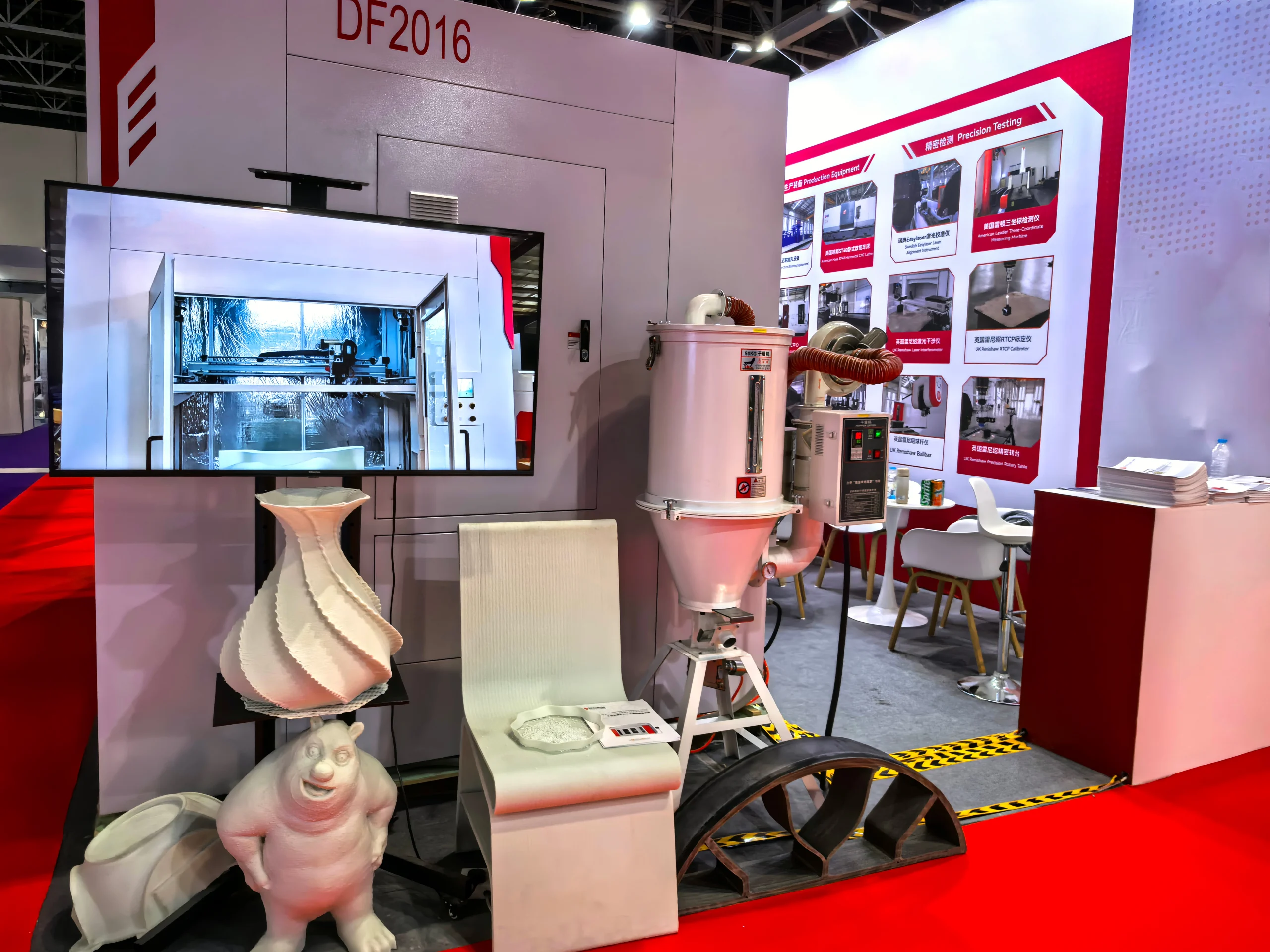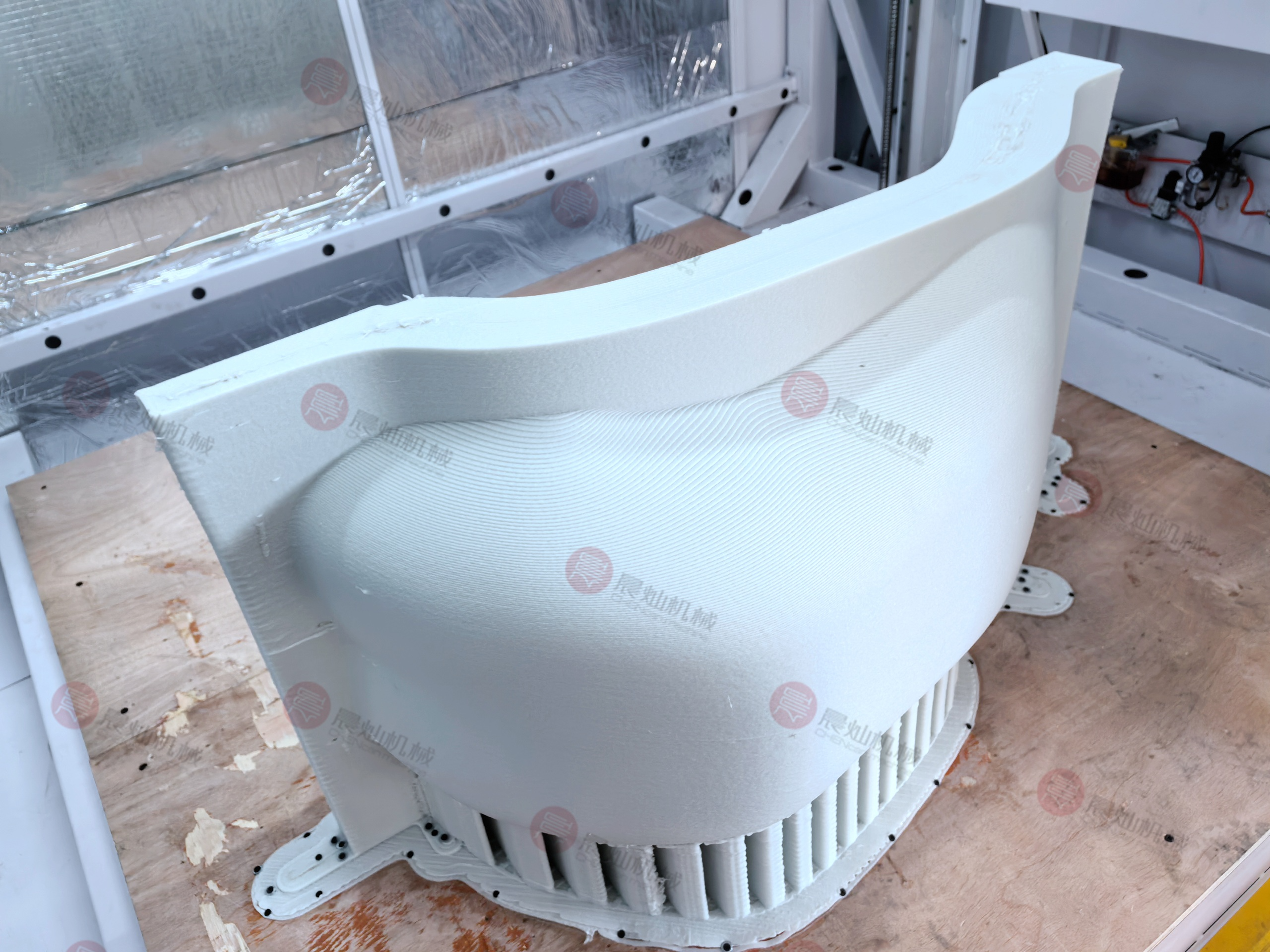In today’s fast-moving industrial world, speeding up production while keeping things flexible and precise is a big deal. Old-school manufacturing methods, though dependable, often stumble when it comes to custom designs, quick turnarounds, or saving materials. Large 3D printers step in here, changing the game for prototyping, mold-making, and scaling up production. For those hunting for heavy-duty solutions blending additive and subtractive processes, CHENcan has a lineup of top-notch machines built for industries like cars, planes, boats, and beyond. Their large-format 3D printers tackle complex shapes, cut down on tooling needs, and reduce waste, making them a smart pick for forward-thinking shops.

What Are the Traditional Limitations in Conventional Manufacturing?
Even though traditional manufacturing is widely used, it comes with hurdles that can slow down creativity and efficiency.
Constraints of Complex Geometry and Customization
Old methods like injection molding or CNC machining struggle with fancy designs or tricky internal structures. Making these often means crafting multiple parts and putting them together in complicated ways. Custom work is tough too, since each new design needs its own mold or tool, which gets pricey for small batches or one-off projects. A small shop once tried making a curvy car part with traditional methods and ended up with a six-week delay just for the mold.
High Tooling Costs and Long Lead Times
Tooling eats up a lot of cash upfront. Whether it’s dies for stamping or molds for casting, building these takes time. This slows things down from design to finished product, especially during prototyping when changes happen often. One aerospace shop reported waiting three months for a custom die, pushing back their project timeline.
Material Waste and Inefficient Resource Use
Subtractive methods carve away material from a big block to shape the final part. This can waste up to 90% of pricey materials like titanium or composites. Plus, the energy used in machining racks up costs and hurts the environment. A boat builder once tossed out half their composite stock because of subtractive cuts, which stung their budget.
How Does a Large 3D Printer Address These Challenges?
Large 3D printers flip the script by building parts layer by layer instead of cutting away extra material, tackling many traditional headaches.
Increased Design Flexibility and Geometric Freedom
These printers can make almost any shape, even combining multiple parts into one piece. Think rocket engine parts printed as a single unit, cutting assembly time. Hollow structures, internal channels, or lattice designs come out without extra tools or steps. A startup designing drone frames used a large 3D printer to create lightweight lattice parts in one go, saving weeks of assembly.
Faster Prototyping and Reduced Tooling Requirements
No molds are needed here. Parts go straight from digital designs to physical objects, skipping traditional tooling. This speeds up development—CAD to prototype in days, not weeks. It also allows cheap trial-and-error tweaks without new molds. A car parts maker tested five bumper designs in a week using a large 3D printer, no extra costs.
Enhanced Material Efficiency and Sustainability
Additive methods use only the material needed for the part, wasting way less than subtractive cuts, which can lose 90% of the stock. Recyclable materials like certain plastics cut costs further. This makes production greener with a smaller environmental footprint. A marine shop switched to additive printing and slashed composite waste by 70%, saving thousands.
What Makes CHENcan’s Large 3D Printers Stand Out?
When picking a large 3D printer for industrial use, the machine has to match real-world needs. CHENcan’s gear shines with tech built for high-performance settings.
Advanced Particle Printing Technology for High Efficiency
CHENcan’s High Efficiency Particle 3D Printing Mold Equipment uses granular thermoplastic extrusion, supporting composites like ABS + fiberglass. These make strong, lightweight parts perfect for planes or cars. A small aerospace firm printed a wing component 30% lighter than before, boosting fuel efficiency.

Integrated Milling and Printing for Precision Moulds
The 3D Printer Machine for Mould Making blends additive printing with five-axis milling. This combo nails both complex shapes and smooth surface finishes needed for molds in casting or thermoforming. A mold shop cut finishing time by half using this hybrid setup.
Industrial-Grade Machines for Large-Scale Production Models
With build volumes up to X:2000mm Y:1600mm Z:1200mm and extrusion rates of 8Kgs/Hr, CHENcan’s Industrial 3D Printer Machines for Process Models handle big jobs. Their steel welding structure and fully enclosed metal cover keep things sturdy during long runs.

Can Large 3D Printers Improve Production Speed and Scalability?
Yes, large-format printers don’t just offer size—they change how fast and flexible production can be by cutting out extra steps.
Streamlined Workflow with Fewer Production Steps
These printers make complex assemblies as one piece, skipping multiple machining or assembly stages. A rocket part that once needed ten machined pieces was printed as one, saving days of work.
On-Demand Manufacturing with Scalable Output
Digital files mean no molds or jigs, so parts can be made as needed without storing extra stock. From one-off prototypes to short runs for boats or medical gear, this setup responds fast to market demands. A medical device firm printed custom braces on demand, cutting inventory costs by 40%.
Consistent Quality Across Large Build Volumes
Precision servo motors and high-accuracy ball screw systems keep repeatability within ±0.15mm/m, even on big builds. This matters when scaling up without losing quality. A car prototype shop maintained tight tolerances across a 2-meter dashboard print, no defects.
Are There Limitations to Using Large 3D Printers?
Large-scale 3D printing has perks, but there are still some hurdles to think about before jumping in.
Equipment Footprint and Space Requirements
Machines with build areas over two meters square need lots of floor space and strong foundations due to their weight. Factories might need upgrades to fit them. A shop had to rearrange their layout to fit a new printer, which took a week.
Initial Investment and Operational Costs
While tooling costs drop long-term, the upfront price for a hybrid printer-miller can be steep. Maintenance for parts like heated extruders adds to budgets. A startup budgeted extra for yearly upkeep after buying a large printer.
Material Compatibility and Mechanical Properties
Not all plastics match the strength or heat resistance needed for some jobs. Supported materials like PP, PC, ABS, PA work well, but some projects still need metal for heavy loads or strict rules.
How Do CHENcan Solutions Support Industrial Applications?
CHENcan goes beyond hardware, offering solutions tailored to specific industry needs.
Customized Solutions for Automotive and Aerospace Industries
For aerospace, casting, or cars, CHENcan’s particle extrusion tech delivers strong, lightweight parts. A carmaker printed aerodynamic prototypes 20% faster than with traditional methods, hitting tight deadlines.
Reliable Equipment for Mould Making and Prototyping
Five-axis milling adds precision to printed molds, key for tight tolerances. Fast reprint cycles let designers tweak and reprint quickly. A mold shop iterated three designs in a day, speeding up client approvals.
Comprehensive Service, Support, and Enterprise Planning
From setup to maintenance, including third-party machine tool services, CHENcan supports big deployments. A smart factory integrated their printers into a digital workflow, cutting downtime by 15%.
Is a Large 3D Printer a Strategic Investment for the Future?
As industries lean into digital production with AI and IoT, flexible machines like large 3D printers become vital.
Alignment with Smart Manufacturing Trends
Digital twin tech needs fast physical outputs for testing. Large printers turn designs into reality in hours, not weeks. A tech firm synced their printer with design software, shaving days off development.
Competitive Advantage Through Innovation
By cutting time-to-market and enabling complex designs, these printers open new product possibilities. A sculpture studio landed big contracts by printing intricate designs competitors couldn’t match.
Long-Term ROI Through Versatility and Integration
CHENcan’s modular systems stay useful as projects evolve, from prototypes to batch production. A marine shop started with prototypes and later scaled to full hull sections, no new machines needed.
FAQ
Q1: What industries benefit most from large 3D printers?
A: Aerospace, cars, boats, architecture, and medical devices gain from complex shapes and fast prototyping.
Q2: Are plastic molds from large printers reusable?
A: Yes, plastic molds are easy to store and can be reused multiple times.
Q3: How does particle extrusion differ from filament-based printing?
A: Particle extrusion uses granular plastics for higher output at lower cost, up to 8Kgs/H.
Q4: Can these machines fit into existing digital workflows?
A: Yes, with support for Cura, Simplify 3D, and STL files, they blend into standard CAD/CAM systems.





